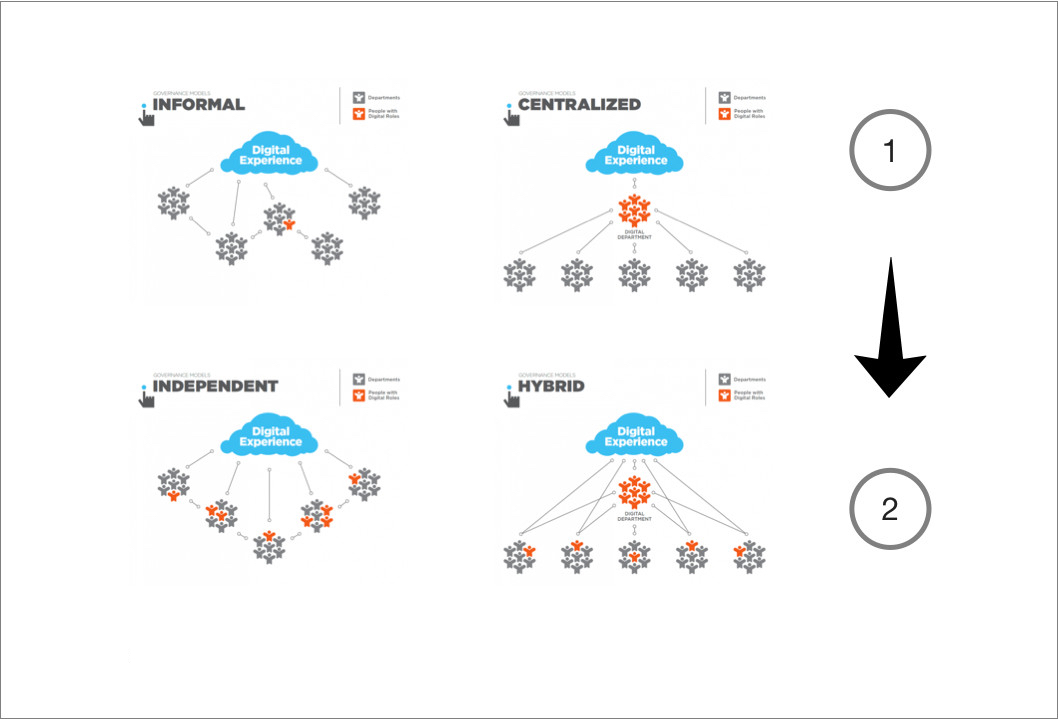Your organisation is pursuing digital transformation, but you’re not sure who should lead it. We discuss the four models you can use.

So you are committed to digital transformation. The C-level is onboard, the department heads are excited, and the budgets are allocated. Now it is time to muster and build the digital team. But, where are the people?
Jason Mogus, Michael Silberman, & Christopher Roy have written (and beautifully illustrated) 'Four Models for Managing Digital at Your Organization'.

In brief, these four models are:
(The people with digital roles are in orange colour.)
Unless your business has been entirely off the grid, you will have some digital expertise in your organisation (Informal or Independent). But you ideally want to be running with the Hybrid model where you have a highly skilled central digital team leading and supporting highly-skilled department digital teams.
Taking a big bang approach to filling the central and department teams with digital roles all at once will not work. It is too drastic a change and may backfire.
A safer way is to first create and run with a Centralised model. We have seen successes when companies create a central "digital services team" and make them responsible for crafting the digital strategy, designing and maintaining vital digital services (both customer-facing and staff-facing) and nurturing the digital culture of the organisation. The team is also responsible for growing digital teams in different departments.
Yes, it looks like the central team will be a bottleneck, but it is the only way to account for the million things that need to be done to become a digital enterprise.
Only after pocketing some big wins, gaining momentum and operating with rhythm, which might take anywhere between 1-3 years, you may be in a position to wean off the central team's grasp and move towards a Hybrid model.

Looking at the pace of digital change taking place, you will continue to depend on a Hybrid model for a long time. The central digital team's role will focus on innovation, partnerships and experiments, while the digital team at the department level will focus on improvements and optimisations.
In summary, if you are running with the Informal or Independent model then it is time to create a central team running in a Centralised model that has the right mix of leadership and technical skills to kickstart your digital transformation journey.

I enjoy helping organisations achieve their potential in an ever-changing and complex world. I lead product and transformation conversations.